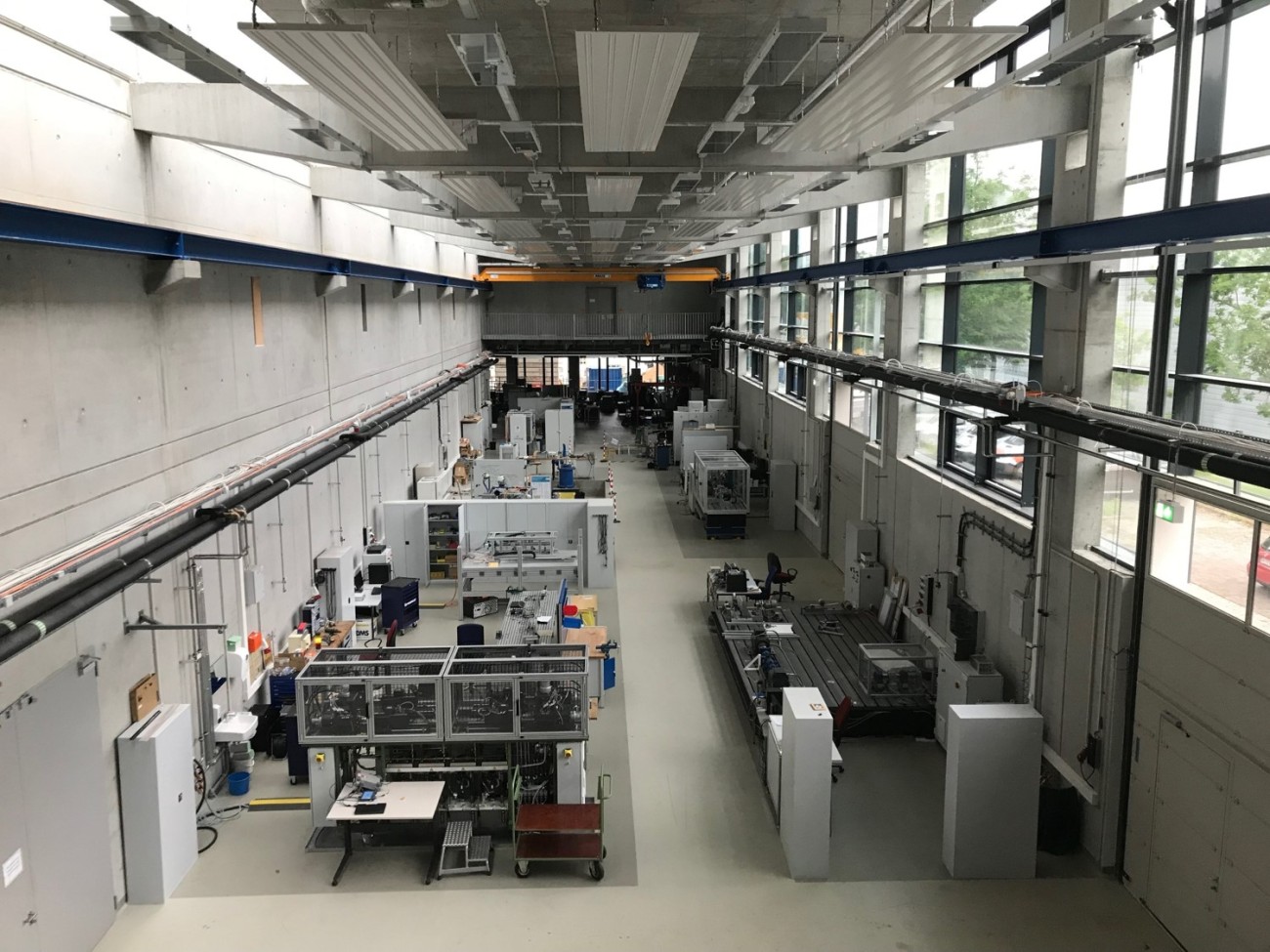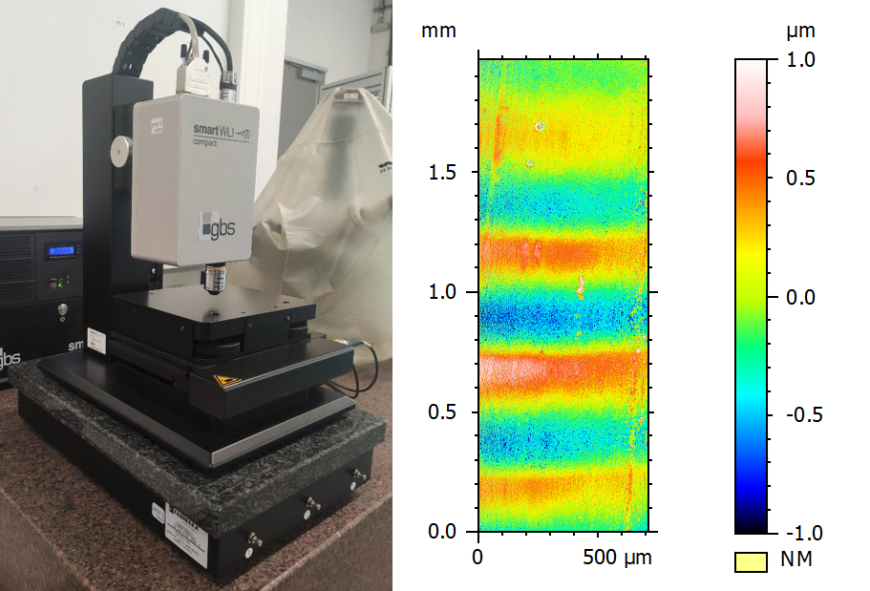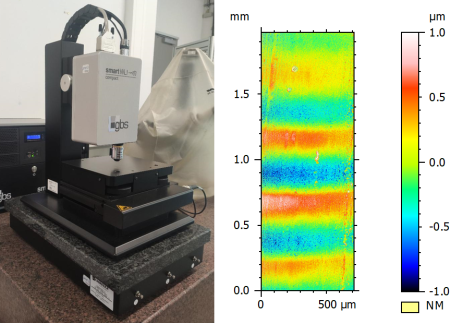White-light Interferometer – GBS smartWLI
The white-light interferometer is used to create topographic surface images. The target is exposed to light and the interference effects of the reflected light are used to determine the distance of the surface points to the lens. The measuring instrument can be equipped, for instance, with a 50x magnification lens, which captures the component surface in measuring points 0.19 µm apart. The resulting topography images have a reproducibility of < 7 nm. The MountainsMap® software is used to process and visualize the measurement data. The white-light interferometer is used at the department, amongst other things, to capture current-induced rolling bearing damage and thus provides important findings for the classification and prevention of electrical bearing damage, for example in electromobility.
| Technical data |
|---|
| Max. acquisition depth: 5000 µm |
| Positioning range: 75 x 50 mm |
| Topography reproducibility: < 7 nm |
|
10x objective with 1.8 x 1.2 mm field of view and 0.96 µm dot pitch |
| 50x objective with 0.37 x 0.23 mm field of view and 0.19 µm dot pitch |





